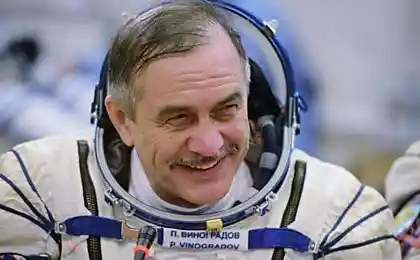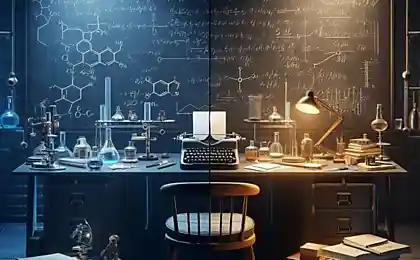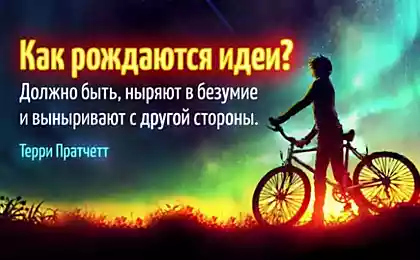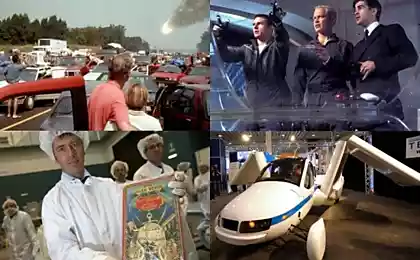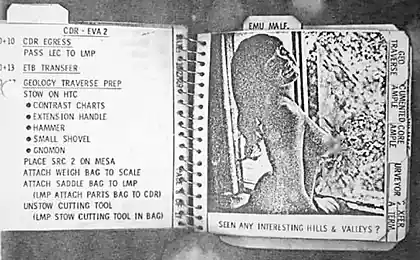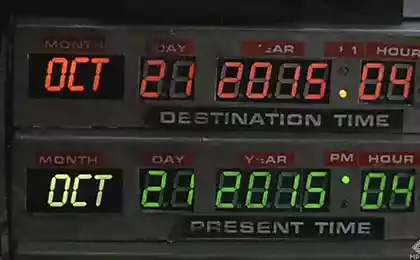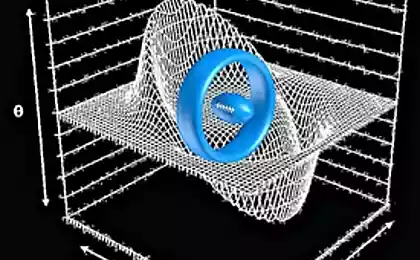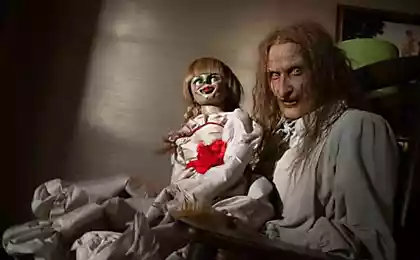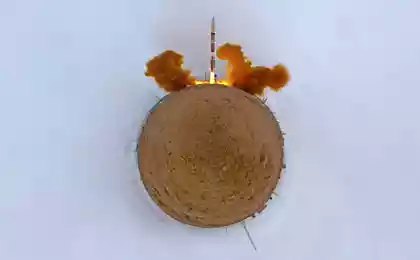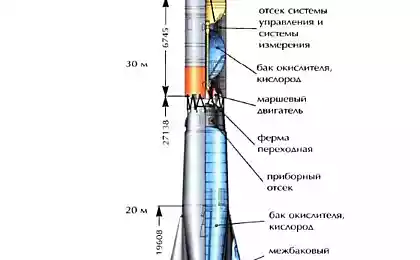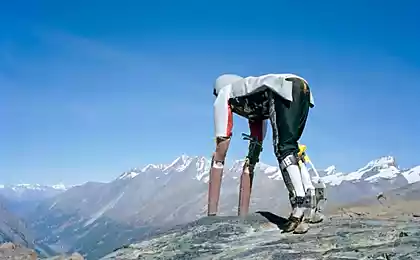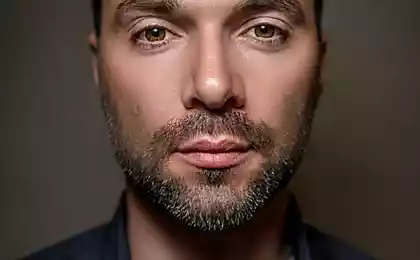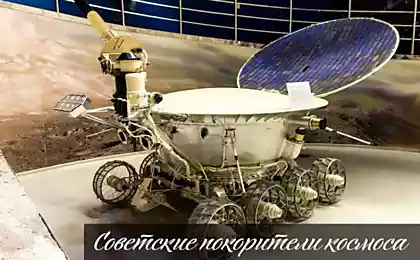234
5 Real Things Science Fiction Didn't Think About
Everything about space has been written and filmed. But, for some reason, not these five things that exist in reality.
5. A planet devouring light
Imagine the helliest planet in the whole cosmos. Someone probably means tons of falling lava and unrealistic temperatures.
In fact, it's still hopeless. A distant giant called TrES-2b is notable for absorbing 99% of the sunlight that hits it. This planet is located in the constellation of Dragon (by the way, most of the space names were invented by director John Carpenter). She's blacker than coal, blacker than black acrylic paint, blacker than the cold, ruthless heart of your ex.
You will never get to this planet because its surface temperature is only five times lower than that of the sun. This is it.
4. A planet like the Eye of Sauron
Remember that thing in Lord of the Rings? An eye of fire in a giant hoop, which one sight spoils everyone's mood?
There is something similar in reality. This young star Fomalhaut b flies in space at a distance of 25 light years from Earth.
Space debris, rocks, ice and dust create a giant disk of the eye that is about twice the size of our entire solar system. Fomalhaut is the size of Jupiter, but worst of all, it is doomed to such life only because another planet is pushing it out of near-stellar orbit.
As a result, Fomalhaut faces all the space debris and is doomed to eternal destruction. The plot for the movie.
3. Evaporating planet
KIC 12557548 b is a planet slowly tortured by its own star. Okay, a little exaggerated. Let's be less dramatic.
If you ever set foot on KIC 12557548 b, this is what happens to you. First, from above you will look at a huge bright star occupying half the sky. But you won’t have time to admire the fiery sky, for how can you breathe in an atmosphere that is 90 percent powdered?
Then, if you are not instantly killed by numerous earthquakes and volcanic eruptions (and they will kill you in a couple of nanoseconds), you will fly into space and turn into dust along with the other 100,000 tons of mass, which evaporates from the planet every second.
On KIC 12557548 b, even rocks and minerals cannot exist due to temperature. And you say it's hot in summer.
2. The planet being tortured
The small planet Kepler-36b is very unlucky. She has a manic older sister, the gas giant Kepler-36c, who tortures her.
This is how it happens. The two planets orbit a star in the constellation Cygnus, with the planets orbiting very close together. This causes them to periodically converge so close that the older planet causes serious damage to the younger one.
At the moment of approach, Kepler-36c literally tortures Kepler-36b, but instead of weapons, it uses a huge force of gravity, turning the little relative into one continuous mess of earthquakes and volcanic eruptions that torment its surface. Poor thing doesn't have a second to recover from the blow.
1. The planet, which is glass raining at a speed of 6500 km / h
Absolute favorite of our rating. It’s easy to imagine what happens on this planet in an early Ridley Scott movie.
The appearance of HD 189773b is very misleading. In appearance, it is very similar to Earth: a blue ball without any flames, space debris and constant collisions. But in fact, the Earthlings would go crazy. After being hit by a shower of glass shards.
Its atmosphere contains large amounts of silicon particles that scatter blue light. The temperature of the planet is almost the same as inside a volcano - turns silicon particles into glass, and then the planet begins to throw fragments of this glass in all directions at a speed of up to 6500 kilometers per hour. This is a deadly global tornado.
Even science fiction is nervously smoking on the sidelines.
source
Source: /users/104
5. A planet devouring light
Imagine the helliest planet in the whole cosmos. Someone probably means tons of falling lava and unrealistic temperatures.
In fact, it's still hopeless. A distant giant called TrES-2b is notable for absorbing 99% of the sunlight that hits it. This planet is located in the constellation of Dragon (by the way, most of the space names were invented by director John Carpenter). She's blacker than coal, blacker than black acrylic paint, blacker than the cold, ruthless heart of your ex.
You will never get to this planet because its surface temperature is only five times lower than that of the sun. This is it.
4. A planet like the Eye of Sauron
Remember that thing in Lord of the Rings? An eye of fire in a giant hoop, which one sight spoils everyone's mood?
There is something similar in reality. This young star Fomalhaut b flies in space at a distance of 25 light years from Earth.
Space debris, rocks, ice and dust create a giant disk of the eye that is about twice the size of our entire solar system. Fomalhaut is the size of Jupiter, but worst of all, it is doomed to such life only because another planet is pushing it out of near-stellar orbit.
As a result, Fomalhaut faces all the space debris and is doomed to eternal destruction. The plot for the movie.
3. Evaporating planet
KIC 12557548 b is a planet slowly tortured by its own star. Okay, a little exaggerated. Let's be less dramatic.
If you ever set foot on KIC 12557548 b, this is what happens to you. First, from above you will look at a huge bright star occupying half the sky. But you won’t have time to admire the fiery sky, for how can you breathe in an atmosphere that is 90 percent powdered?
Then, if you are not instantly killed by numerous earthquakes and volcanic eruptions (and they will kill you in a couple of nanoseconds), you will fly into space and turn into dust along with the other 100,000 tons of mass, which evaporates from the planet every second.
On KIC 12557548 b, even rocks and minerals cannot exist due to temperature. And you say it's hot in summer.
2. The planet being tortured
The small planet Kepler-36b is very unlucky. She has a manic older sister, the gas giant Kepler-36c, who tortures her.
This is how it happens. The two planets orbit a star in the constellation Cygnus, with the planets orbiting very close together. This causes them to periodically converge so close that the older planet causes serious damage to the younger one.
At the moment of approach, Kepler-36c literally tortures Kepler-36b, but instead of weapons, it uses a huge force of gravity, turning the little relative into one continuous mess of earthquakes and volcanic eruptions that torment its surface. Poor thing doesn't have a second to recover from the blow.
1. The planet, which is glass raining at a speed of 6500 km / h
Absolute favorite of our rating. It’s easy to imagine what happens on this planet in an early Ridley Scott movie.
The appearance of HD 189773b is very misleading. In appearance, it is very similar to Earth: a blue ball without any flames, space debris and constant collisions. But in fact, the Earthlings would go crazy. After being hit by a shower of glass shards.
Its atmosphere contains large amounts of silicon particles that scatter blue light. The temperature of the planet is almost the same as inside a volcano - turns silicon particles into glass, and then the planet begins to throw fragments of this glass in all directions at a speed of up to 6500 kilometers per hour. This is a deadly global tornado.
Even science fiction is nervously smoking on the sidelines.
source
Source: /users/104
Build a summer kitchen with veranda—ideas for the estate
Amazing photo report: Modern England through a 130-year-old camera

